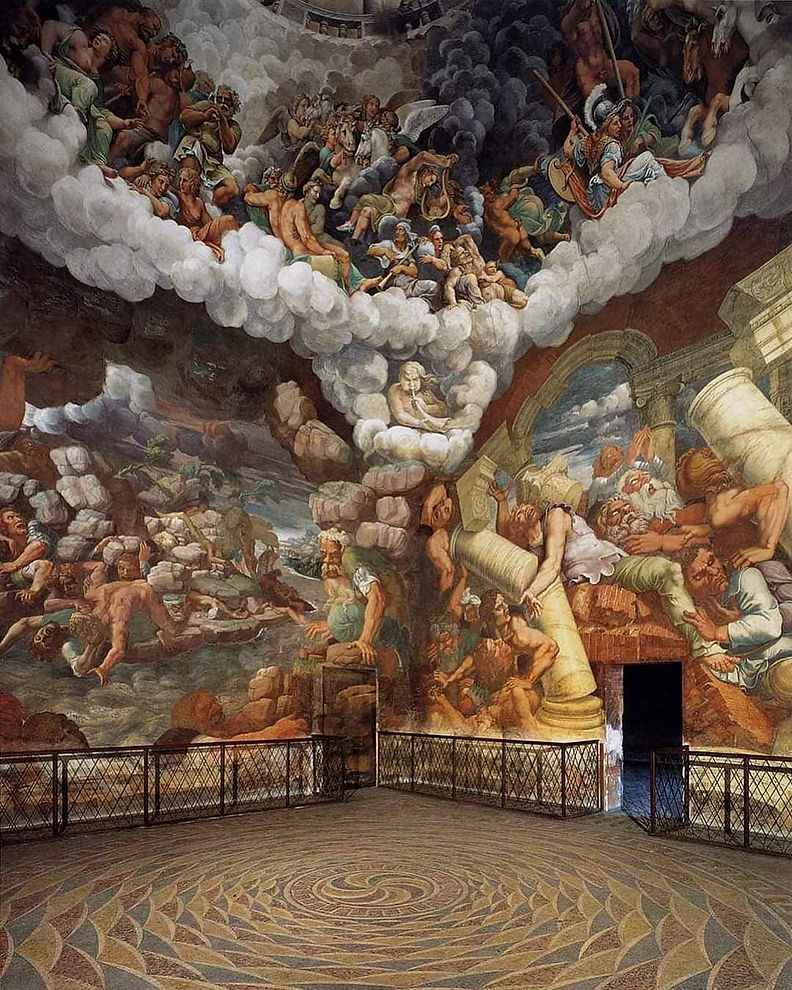
Mannerism

Elvira Valentina Resta
ASAG Journal
February 1, 2021
Mannerism (1520–1600) was a new period of human thought, that moved dramatically away from the pure realism and naturalistic compositions of Renaissance Italy. The 16th century artists of Rome and Florence had begun to express a more intellectual and philosophical method through their paintbrushes. The traditional and authentic portraits of the human figure and landscape were no longer confined by the concept of perfect symmetry or the pictorial plane. During a time when scientific discoveries dispelled the myth that humankind was the center of the universe, this new art explored the deepening mystery of our existence.
Let's take a look at a couple of examples...
"Water" aka "L'acqua", 1566 by Giuseppe Arcimboldi
"Water" aka "L'acqua", 1566
by Giuseppe Arcimboldi
Period: Mannerism
Location: Kunsthistorisches Museum, Vienna, Austria
Giuseppe Arcimboldi was one of the most original Italian artists of the second half of the sixteenth century. From 1562 he worked at the court in Prague, where he was appreciated for expressing the refined extravagance of his subjects. His painting, linked to the most extreme themes of Mannerism, symbolizes the search for the imaginative and the impossible. The famous "compound heads" are the most significant example of how, starting from simple objects of reality (flowers, fruits, vegetables, animals, books and various utensils) one can arrive at compositions so extraordinary and unreal that they sometimes appear even ambiguous and monstrous.
The oil on panel, 'Water', is part of a series of four allegories on the elements of nature (Earth, Water, Fire and Air) commissioned from 1566 by Emperor Maximilian II of Habsburg, established art collector and amateur of everything eccentric and rare. In the composition are about sixty recognized aquatic species, including the breed (cheek), the moray eels (nose), the shark (mouth). The painting is of astonishing realism, as individual animals are represented with extraordinary accuracy and vivacity, as in a treatise on zoology, but also of great abstraction, because the senses are misled to force us to observe the painting several times to truly realize what is painted. In courts all over Europe, the Wunderkammern were fashionable, that is, the rooms of wonders, where extraordinary objects such as rare shells, exotic flowers, stuffed animals of unknown species and other bizarre nature were collected. Alongside this, there were also particular works of art that, thanks to the exasperated use of perspective or, as in the case of Arcimboldi's works, the strangeness of the themes, amazed and disoriented even the most attentive observer.

"The Hall of the Giants", 1532-1535 by Giulio Romano
The Hall of the Giants is a massive fresco depicting the story of Fall of the Giants and it was painted between 1532 and 1535. The room was designed to look like a cave and then decorated with representations of monstrous creatures waging an attack on Mount Olympus and the heavens. The painting covers the entire space from the base of its walls all the way to the ceiling with an incredible illusionistic representation of the battle between the Giants trying to climb to the heart of Olympus and Zeus. It is located in The Sala dei Giganti which is one of the most famous frescoed rooms inside the Palazzo del Te palace, in Mantua, Italy.





